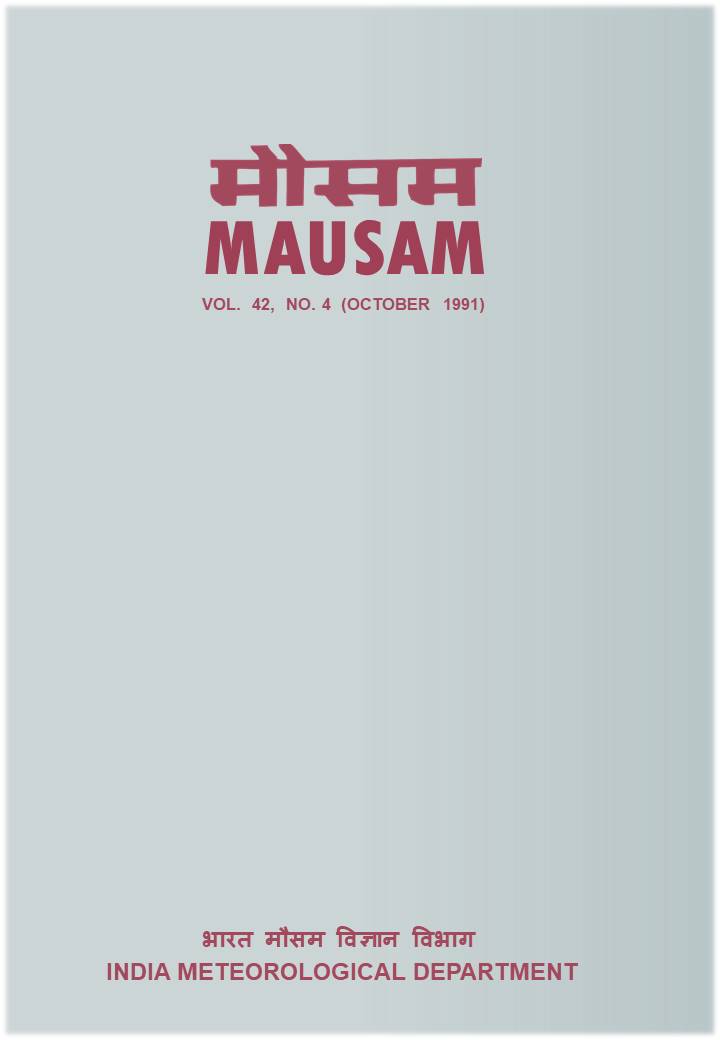Numerical simulation of sea breeze in south Andamans
DOI:
https://doi.org/10.54302/mausam.v42i4.3253Abstract
The air flow over the south Andaman island is simulated using a three dimensional numerical meso-scale model. Port Blair observations are used as initial data. The surface orography, soil moisture soil albedo variations and vegetations effects are included in the model. The combined effect of these factors on the development of sea/land breeze circulations is obtained quantitatively. The model simulated results are compared with the available observations. The principal results obtained are : (1) The meso-scale circulations induced by the differential heating of the island were intensified by topography. (2) The ground vegetative cover trans- port higher amount of turbulent heat fluxes: to the atmosphere and the meso-circulations appeared with higher intensities. (3) If we Include the lateral variations of flux with topographic and coastal asymmetries the induced meso-scale circulations appeared with different intensities along meridional direction and the inland penetration distances varied in y direction. The maximum Inland penetration of sea breeze was seen, where the inland was widest and terrain height was maximum. Stronger sea breeze was simulated over the central/northern parts of the island.
Downloads
Published
How to Cite
Issue
Section
License
Copyright (c) 2021 MAUSAM

This work is licensed under a Creative Commons Attribution-NonCommercial 4.0 International License.
All articles published by MAUSAM are licensed under the Creative Commons Attribution 4.0 International License. This permits anyone.
Anyone is free:
- To Share - to copy, distribute and transmit the work
- To Remix - to adapt the work.
Under the following conditions:
- Share - copy and redistribute the material in any medium or format
- Adapt - remix, transform, and build upon the material for any purpose, even
commercially.



